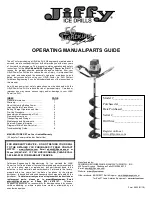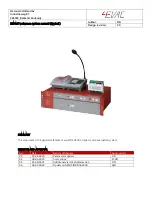
Getting started
The rest of this Manual is structured as follows:
l
The next section,
in this
Getting Started
chapter provides a
brief overview of the way you use aCOLyte3 to count colonies. This involves two main
phases:
l
using
the Batch Designer
to set up the system for detecting and counting colonies on
a series of plates;
l
using
Measurement mode
to actually count the colonies on the plates and record the
results.
The next section also introduces you to the idea of a ‘batch’, which is used to hold the
settings made in
the Batch Designer
and then to store the results produced in
Measurement mode.
The final two sections of this
Getting Started
chapter give instructions for starting
aCOLyte3 (see
, on the facing page) and then for logging out and
closing aCOLyte3 (see
Logging out and closing aCOLyte3
, page 5).
The remaining chapters are:
l
, page 7, which shows you how to load plates into aCOLyte3 and
capture an image of the plate.
These procedures are used in the Batch Designer and Measurement mode.
l
, page 17, which shows you how to use the Batch Designer to
create a new batch and specify how colonies should be counted.
Some of these procedures can also be applied in Measurement mode.
l
Using Measurement Mode to count colonies
, page 61, which shows you how to count
the colonies on a series of plates.
l
, page 77, which shows you how to view and edit the results of your
measurements and how to create reports using the results.
l
, page 91, which shows you how to configure aCOLyte3 in a
variety of ways, including how to set up and manage user accounts to protect access to
the program.
Using aCOLyte3 – overview
aCOLyte3 uses ‘batches’ to define the settings used to detect colonies on plates and to store
the results of the measurements you make using those settings. This means that before you can
use aCOLyte3 to take any measurements, you must have an open batch. You can do this by
opening an existing batch or by creating a new batch. You can create a completely new batch
or base a new batch on an existing one, either to use the same settings, or as a starting point
for defining new settings. aCOLyte3 automatically saves your results in the current batch, so
once you have created and accepted a batch design, you do not need to take any action to
save it again.
Each batch contains the settings and results for detecting and counting the colonies on a series
of plates that have the same types of colony, use the same medium and are of the same type
(Pour Plate or Spiral Plate).
2
aCOLyte3
User Manual
Summary of Contents for SYNBIOSIS aCOLyte3
Page 2: ......
Page 6: ......
Page 12: ...Getting started 6 aCOLyte3 User Manual...
Page 22: ...Capturing images 16 aCOLyte3 User Manual...
Page 66: ...Creating a new batch 60 aCOLyte3 User Manual...
Page 96: ...Working with results 90 aCOLyte3 User Manual...
Page 108: ...Configuring aCOLyte3 102 aCOLyte3 User Manual...









































